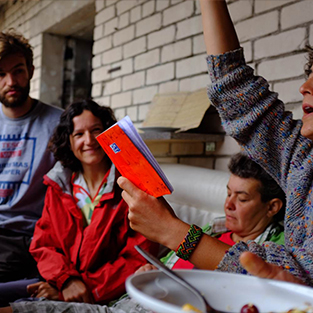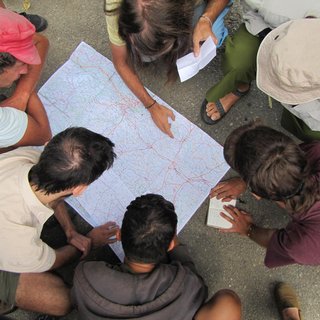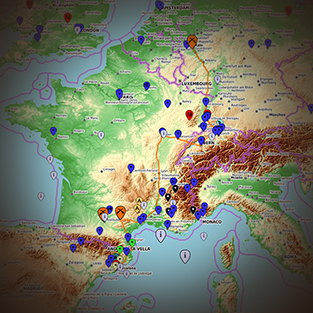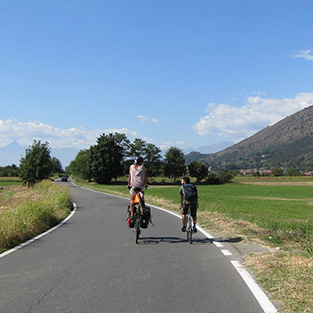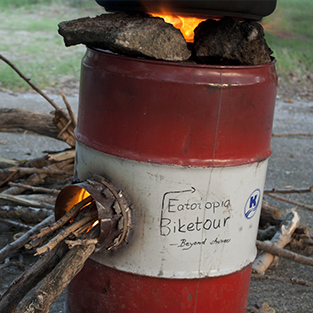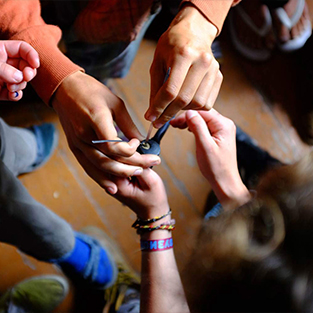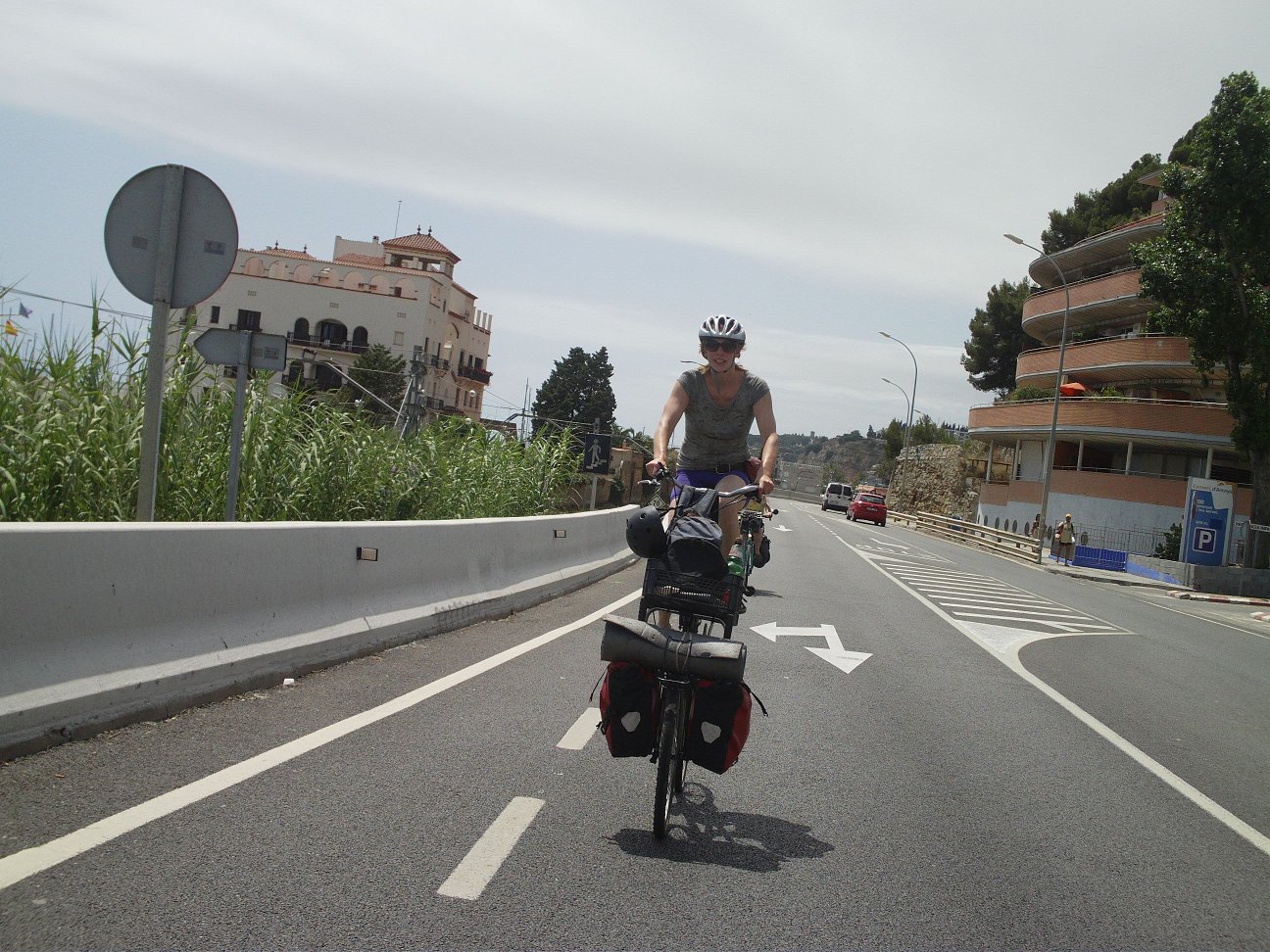About
We try to make the tour as inclusive as possible for any level of fitness or experience with bike touring. We cycle a maximum of 30–70 km per day (depending on the hills), and on average half of the days we stay in a place without cycling. Our experience is that almost everyone can manage this, but there is the possibility to shorten the distances if we discover that it is too much. People cycle in small groups or alone, at whatever speed suits them, and many people like to take it slow and take lots of breaks. A detailed route plan for the day is shared in the morning, arrows are drawn with chalk on the road at every turn, and if you get lost you can always call the Biketour phone. If you have a shitty bike, you will not be the only one, and we enjoy supporting each other if something breaks. We make sure that the last people to leave carry a toolbox, a phone and a first-aid kit in order to assist if anything goes wrong on the road.
Read more about what the Ecotopia Biketour is. If you would like to get an insight into the organisation or just ask a question, contact us.
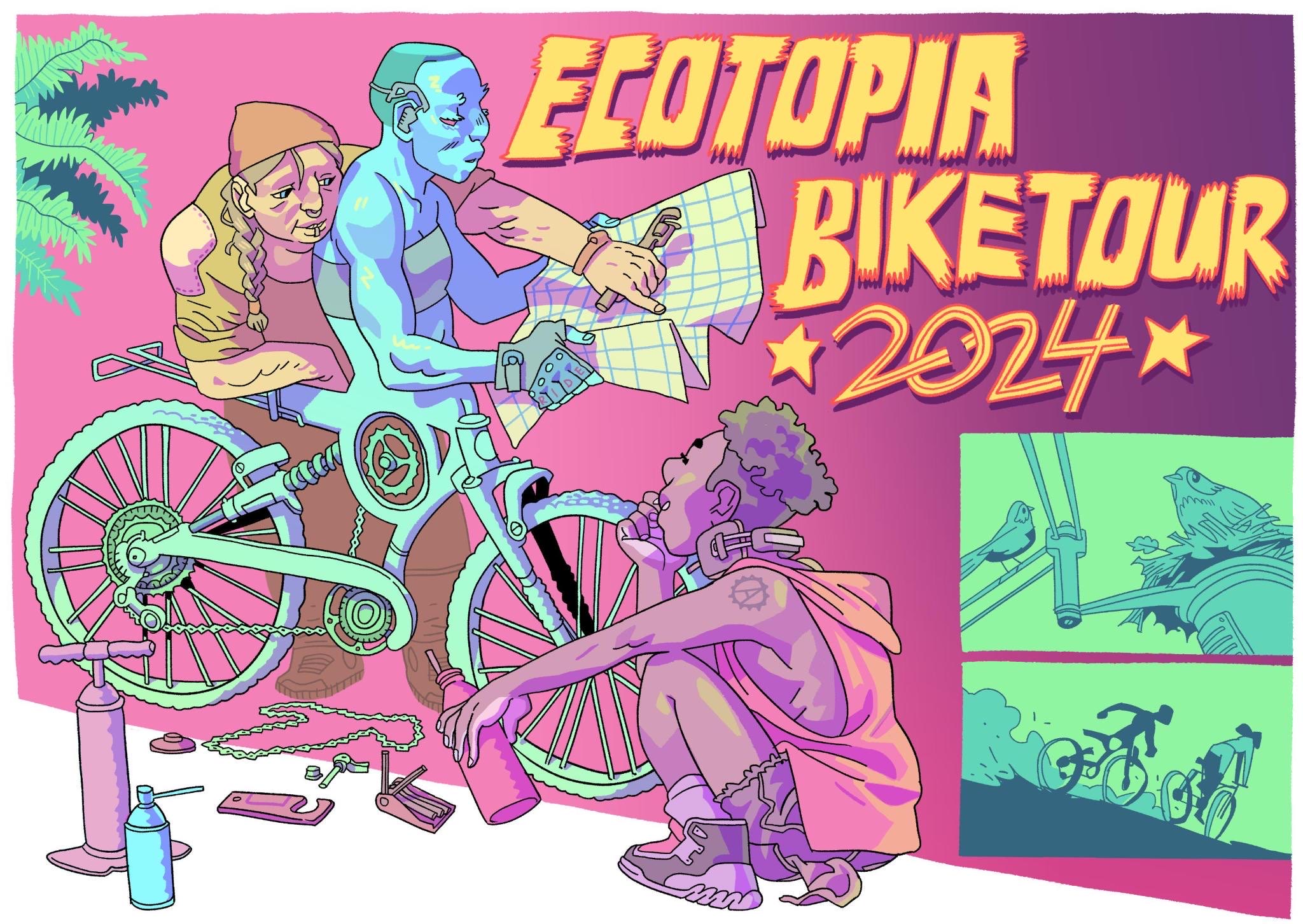
Latest blog posts
Beaches, hitchbiking, wild fruit, pledges and police
Beaches As I write this, I’m on a warm sandy beach in Sant Pol de Mar on the Mediterranean coast in the evening. Our group is watching the fireworks dancing above the town. Somebody asked whether they were ‘eco-fireworks’. We thought about it, then gave a small ‘woop’ for the next green one. A firework after our own hearts. As the locals serenaded us with guitars, an oboe, tuba and stunning voices , and gave us beer, I thought, “I could get used to this degrowth lifestyle”. I am also enjoying all of the Spanish accents pronouncing ‘beach’, it makes…
From Can Prim to Can Torres
We woke up in bright sunlight floating the Pyrenees in the background in bright colours. Over night some of our communal items (and some personal shoes) had been attacked and partly eaten by animals – a learning experience… After a breakfast with lots of warm leftover food from the night before, we had a short ride on a flat road leading us to Figueres. Our group was a focus of attention on the market square; several people came up to us, children looking skeptically and bicycle fans telling us about their own trips and admiring the tall bike among us.…
tall-bike on the coast…
Bicicletada en defensa de Collserola
Video of the first cycling day of the biketour, critical mass in defense of Collserola mountain, a nice ride from Can Masdeu to Kan Pasqual.






